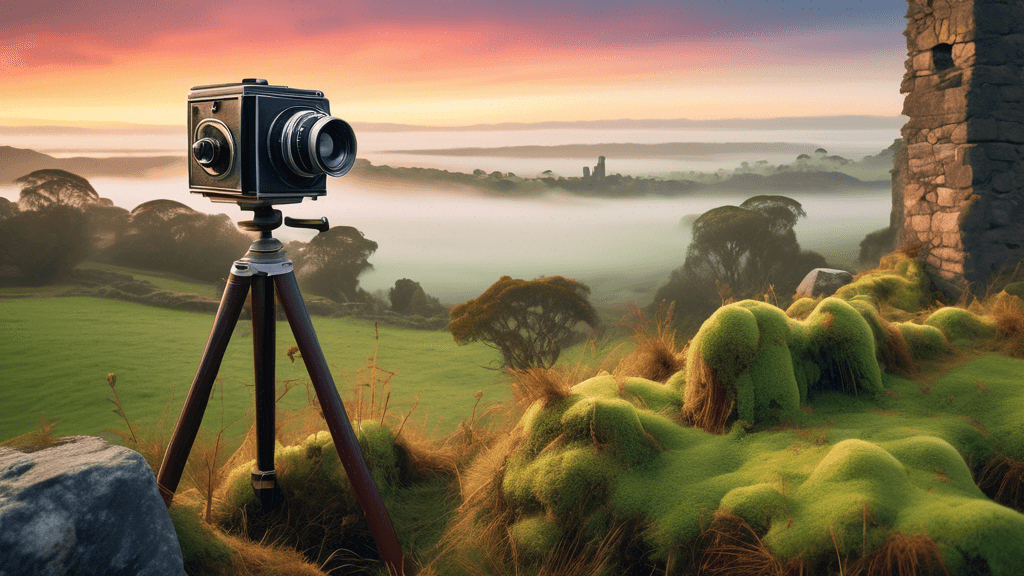
Capturing Time: Exploring New Zealand's Abandoned Historical Sites through Photography
Share
Exploring New Zealand's Abandoned Historical Sites Through Photography
Have you ever stood in a place where the whispers of history seem almost audible? Where each crumbling wall or rusted hinge tells a story of ages past? New Zealand, often celebrated for its lush landscapes and vibrant culture, also harbors silent sentinels of history—abandoned sites that offer photographers a rich tape of narratives woven through time. This blog delves into the world of capturing these poignant moments through the lens, exploring not just the aesthetics, but the significance of these historical sites.
Why Document Abandoned Sites?
Photography serves as a potent tool in conserving history and sparking conversation. It compels us to ask: Who inhabited these spaces? What stories unfolded here? And why were they abandoned? Through capturing images of these forgotten locations, photographers play a crucial role in keeping the past alive, providing insights and prompting discussions on heritage and historical preservation.
A Look at Notable Abandoned Places in New Zealand
New Zealand’s abandoned sites range from old gold mining towns to derelict psychiatric hospitals, each with a unique backdrop and story. Let us explore a few significant sites:
- Macetwoen's Old Mining Town: Nestled in the rugged South Island landscapes, this town boomed during the gold rush of the 1860s but was deserted as the gold seams dried up. The weather-beaten structures and discarded mining equipment offer a haunting reminder of the transient nature of such towns.
- Katikara Battlegrounds: This lesser-known site was the location of a significant 1863 conflict during the New Zealand Land Wars. The battlegrounds, largely unmarked and reclaimed by nature, provide a serene yet somber subject for photographers interested in capturing the essence of New Zealand’s turbulent past.
- Whau Lunatic Asylum: Opened in the late 19th century and abandoned in the mid-20th century, its dilapidated remains present a chilling yet visually arresting spectacle. Its empty halls and broken windows serve as poignant reminders of the past mental health practices.
These sites, while beautiful, are also delicate. Photographers visiting these locations are urged to respect the surrounding environment and adhere to local guidelines to ensure these historical sites are preserved for future generations.
Techniques and Tips for Capturing Abandoned Sites
Capturing the essence of abandoned sites requires more than just technical skills; it demands an understanding of the site's history and sensitivity to its stories. Here are some techniques and tips for photographers aiming to document these places effectively:
- Research Before You Shoot: Understand the history and significance of the location to provide your images with context and depth.
- Use Natural Light: Natural light can enhance the mood and give your photographs a more authentic feel. Whether it's the eerie light of dawn or the golden hues of dusk, timing your visit can dramatically impact the quality of your captured images. tle>
- Focus on Details: Sometimes, the smallest details can tell the most compelling stories. Focus on textural contrasts, aging materials, and remnants of everyday life to give viewers a glimpse into the past.
Each photo of an abandoned site is a preservation of history, states John Smith, a professional historical photographer. It is an act of capturing time paused, of moments suspended. This is especially true in a place as dynamically historical as New Zealand.
The Impact of These Photographs on Public Awareness and Conservation
Photographs of New Zealand's abandoned historical locations do more than capture the eye—they stir the conscience. By sharing images of these places, photographers highlight the urgent need for conservation and provoke discussions on cultural heritage. This visual advocacy plays a pivotal role in ensuring these stories are not forgotten but are instead passed on to future generations.
Moreover, with the burgeoning interest in eco-tourism and historical tours, photographs of these sites could potentially aid in their preservation by sparking interest and tourism, which can be channeled back into maintenance and conservation efforts.
Conclusion: A Call to Action for Aspiring Photographers
If you are a photographer with a penchant for history and storytelling, New Zealand’s abandoned sites offer a profound canvas. Whether it's for artistic expression, historical conservation, or both, the role you can play in capturing and preserving these temporal slices of heritage is invaluable. So, gear up, step out, and capture the stories that are silently vanishing from our landscapes, waiting for your lens to bring them into the light once again.
Will your photography become a portal through time? Will it embolden others to look beyond the beauty and delve into the stories? Only your photographs can tell.





